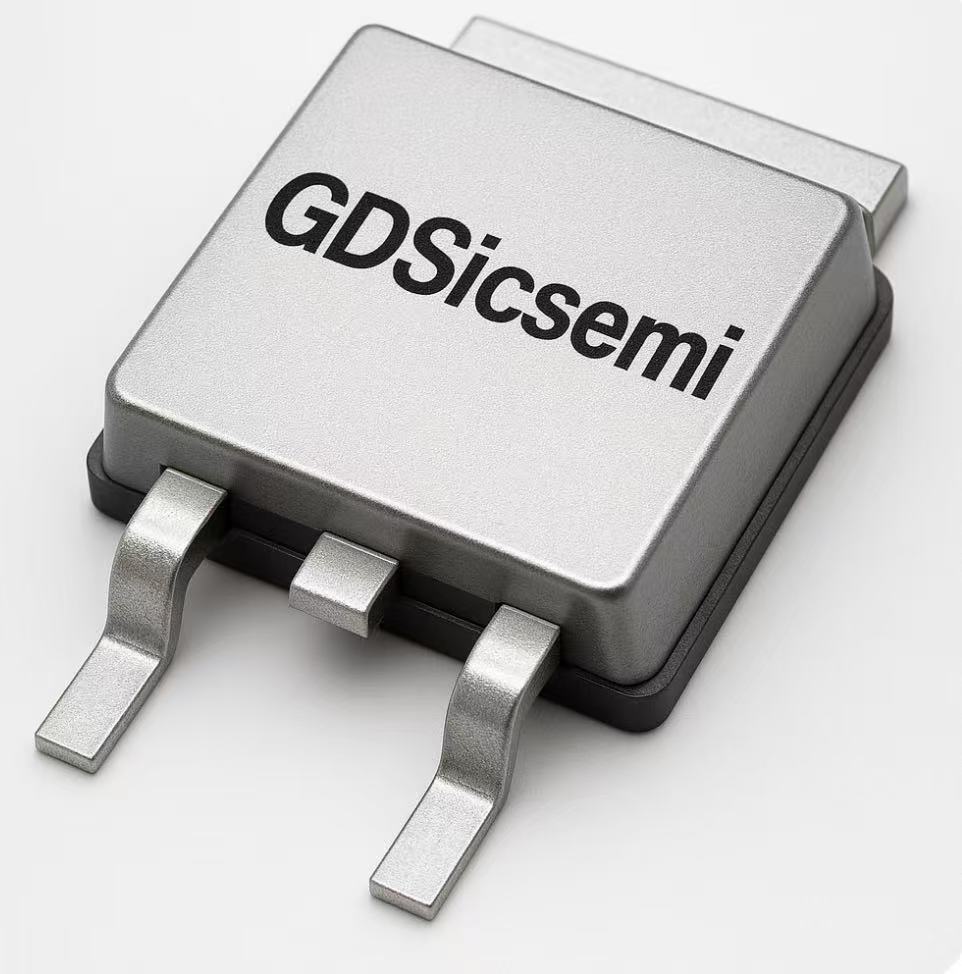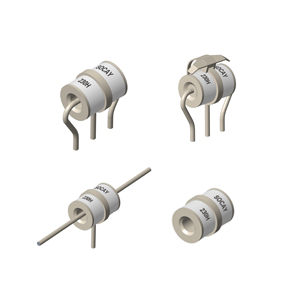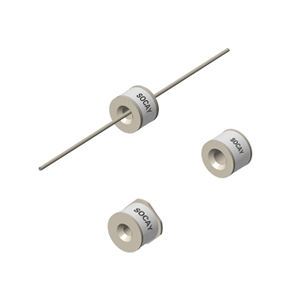AI intelligent products recommend the following materials (alloy resistors)
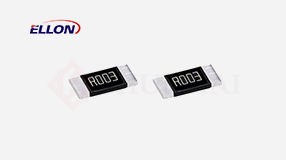
With the emergence of ChatGPT driving the prosperity of generative AI, mobile chip manufacturers have ushered in new opportunities.
In the development of mobile intelligent terminals over the past decade, mobile phone manufacturers have engaged in fierce competition around a series of functions such as performance, display, photography, and charging. As an important force behind this battle, chip manufacturers have also engaged in more than a dozen back and forth attacks and defenses in areas such as architecture, process technology, and power consumption to meet the performance requirements of these new features.
However, as you can see, in the past few years, as the chip manufacturing process has reached a bottleneck, coupled with the lack of terminal innovation, the entire industry has fallen into a prolonged tug of war. However, with the emergence of generative AI applications such as ChatGPT last year, the mobile phone industry has found a new driving force - generative AI.
As a leader in the smart chip industry, MediaTek recently held a grand "Dimensity Developers Conference (MDDC 2024)" with the core theme of "AI for All", exploring with the industry chain how to more conveniently popularize generative AI in various industries.
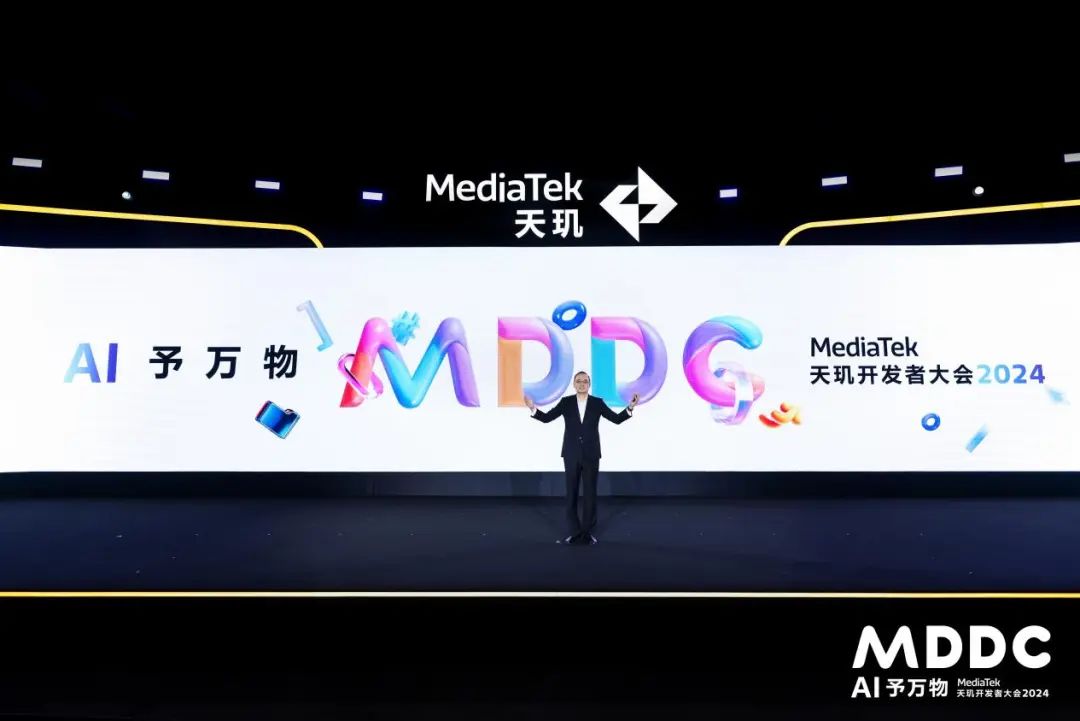
Generative AI accelerates popularity, and chips shoulder heavy responsibilities
For AI, a focus of attention in the past few years has been on how to implement it? Where will it land? Even after the release of large models, this still troubles developers.
In response to this issue, Chen Guanzhou, Director, General Manager, and Chief Operating Officer of MediaTek, pointed out in his speech at MDDC 2024 that after the emergence of generative AI applications represented by ChatGPT, manufacturers have first found opportunities for applications in the enterprise market (such as Microsoft Copilot, which is a typical application example), but the market value it creates cannot be compared to consumer applications. So, the industry is exploring new opportunities for generative AI on the consumer end. Smartphones, due to their better experience of end-to-end computing power, large user scale and high stickiness, and complete application ecology, have naturally become the preferred choice for end-to-end AI applications.
From the perspective of industry development, end-to-end generative AI has also become the next major event in the smartphone industry.
However, different manufacturers have different definitions of what a generative AI phone is. According to the White Paper on Generative AI Phone Industry jointly released by Counterpoint and MediaTek, generative AI phones need to have the following characteristics: support for local deployment of large models (or perform complex generative AI tasks through cloud collaboration), have multimodal capabilities (i.e. can process various forms of content input such as text, images, voice, etc. to generate various forms of output), ensure smooth and seamless user experience (devices can respond quickly to user requests in a natural and intuitive way).
In addition, generative AI smartphones also need to have hardware specifications that implement the above features, including but not limited to mobile computing platforms based on leading technology and advanced architecture design, integrated or independent neural network computing units (such as APU/NPU/TPU), large capacity and high bandwidth memory, as well as stable and high-speed connections, hardware level and system level security defense.
From this, it can be seen that the "TOPS" of chips has become a threshold that generative AI must cross to enter the smartphone industry, especially after Counterpoint predicts that the upper limit of local large model parameters will increase to 13 billion in 2024 and 17 billion in 2025, chips will inevitably shoulder a heavy responsibility, which is exactly the field that MediaTek excels in.
It is understood that with its deep foundation and rich experience in the field of edge computing, MediaTek has enabled 2 billion intelligent terminal devices every year, bringing unprecedented innovation in human-computer interaction, productivity, entertainment experience, etc. The influence of the company on smartphone chips is evident to all. According to the latest report released by market research firm Counterpoint Research, MediaTek ranked first with a market share of 36% in the global smartphone application processor market in the fourth quarter of 2023, far ahead of the second place.
In terms of artificial intelligence, MediaTek has also accumulated a deep foundation. As early as 2018, the company released its first smartphone chip, the Heilo P60, with an APU (AI computing unit). Specifically, in terms of large models, although the outbreak did not occur until the end of 2023, Dr. Lu Zhongli, Deputy General Manager of MediaTek's Computing and Artificial Intelligence Technology Business Group, revealed in an interview with Titanium Media at the beginning of the year that MediaTek had already conducted preliminary research on the APU level architecture and algorithm adaptation around the Transformer model in 2019, especially in the areas of image and speech.
By 2023, MediaTek has iterated APU to the seventh generation, which can reduce power consumption by 50% while doubling computing power. Finally, there has been a great explosion of generative AI applications. In MDDC 2024, following the previous launch of the Dimensity 9300, MediaTek has also brought the 5G flagship generative AI mobile chip Dimensity 9300+. It is reported that the chip continues the full core CPU architecture, providing excellent experience for high-end mobile phone users and game players. In addition, the Dimensity 9300+has strong generative AI capabilities and is the first to support AI inference decoding acceleration technology on the end side, greatly improving performance. It can increase the running speed of Llama's 27 billion model to 22 Token/s, achieving the industry's highest end-to-end running speed.
The fundamental reason for MediaTek's ability to play an important role in the transition from end-to-end AI to the era of smartphones lies in its ability to take and demand chips and hardware. And in terms of software and ecosystem, it is MediaTek's ability to give AI the confidence to excel in smartphones.
Tianji AI development kit empowers terminal development
In an interview with media outlets such as Semiconductor Industry Watch, Zhang Li, Senior Director of Ecological Development at MediaTek's Wireless Communication Division, bluntly stated, "Generative AI has given many developers a new opportunity.".
As he said, before the arrival of generative AI, the mobile phone industry seems to have begun to fall into an innovation bottleneck. And the transition from image scrolling to folding also makes app manufacturers feel at a loss. Furthermore, because rules have already been established in the past, competition has been relatively convergent, and traffic has also been relatively convergent, making it difficult for many developers to have new innovation opportunities. But generative AI is different. It provides developers with more tools and allows them to have richer resources; With the help of these tools, developers will have more innovative capabilities and create explosive products, said Zhang Li.
However, as you can see, all of this will not be achieved overnight, and developers cannot seamlessly switch from traditional software development to the development ecosystem of generative AI smartphones. The various issues involved in toolchain, chip and model adaptation, and application development cannot be perfectly solved immediately.
With this in mind, MediaTek held the first "Dimensity Developer Conference", showcasing a Dimensity AI ecosystem strategy consisting of chips, models, and applications. And we hope to explore and develop end-to-end AI technology with industry partners and developers, accelerate the evolution of terminal devices and applications from graphical touch UI to agent UI empowered by generative AI, and provide users with better interactive experiences, multimodal content generation capabilities, personalized services, and innovative application ecosystems.
Among them, a user-friendly toolchain has become the first challenge that MediaTek aims to solve.
As is well known, deploying large models is never an easy task for developers. Especially on the side where there is a mandatory demand for power consumption, hardware, and even cost, this challenge is particularly severe. So, MediaTek integrated the tools developers needed to develop AI applications and launched the "Tianji AI Development Kit", providing developers with a "fast, comprehensive, strong, and easy" professional development experience, empowering the entire process of terminal generative AI application development.
It is reported that the suite includes four major modules: fast and efficient GenAI best practices, GenAI Model Hub covering mainstream global models, efficient performance enhancing GenAI optimization technology, and Neuron Studio one-stop visual development environment.
Among them, GenAI best practices provide technologies such as INT4 quantization, memory compression, token acceleration, etc. through model quantization, model compilation, and model inference, which can accelerate the time required for terminal deployment of large models from weeks to a day, which is called "fast"; The GenAI Model Hub is adapted to cutting-edge and mainstream large models in the industry, providing developers with rich large model resources to efficiently build generative AI applications, which is known as "all"; GenAI optimization technology includes support for advanced technologies such as speculative decoding acceleration and LoRA Fusion, which is called "strong"; As for "ease", it vividly reflects the one-stop visual development environment provided by Neuron Studio integrated development environment, breaking away from traditional code development environments and bringing a more user-friendly development experience like "what you see is what you get".
Integrating all the tools and making them usable in a simple way is the biggest difference in the mindset of this developer conference compared to before. This has undergone significant changes and transformations not only in terms of ideas, but also in terms of approach and scalability for the future. Li Yanji, Deputy General Manager of MediaTek Wireless Communication Business Unit, summarized.
It is worth mentioning that the Dimensity AI development kit is not only aimed at smartphones, but also covers intelligent terminal devices such as smart cars, the Internet of Things, and personal computers, empowering the development of full scenario generative AI applications.
Joining hands with upstream and downstream ecosystems to accelerate the popularization of AI
While providing "weighing tools", MediaTek has also partnered with companies such as Alibaba Cloud, Baichuan Intelligence, Transsion, OneThing, OPPO, Honor, vivo, and Xiaomi to launch a "Tianji AI Pioneer Plan" for global developers, efficiently empowering developers to build a new AI ecosystem from cloud to terminal, and accelerating the popularization of generative AI technology on smart terminals.
Specifically, MediaTek hopes to collaborate with application developers who are benchmark in nature, have invested early in development, and have started importing generative AI, to lead the entire ecosystem forward. According to the plan, the AI Pioneer Plan consists of two parts: the first step is to collaborate with the Joint Development Association and some large model and OEM manufacturers to leverage the underlying role of the mobile ecosystem to drive all parties in the ecosystem to seek consensus, and jointly build a hardware foundation suitable for the implementation of end-to-end generative AI; The second step is to collaborate with all app developers to explore and develop new applications on this hardware foundation.
The core goal of the Tianji AI Pioneer Program is to release development resources to application developers, encourage their active participation, and accelerate the construction and promotion of the ecosystem. "We hope to attract more developers to start using our development tools and create innovative generative AI applications through the Pioneer Program," Li Yanji explained.
At the meeting, we also learned that currently, MediaTek has partnered with dozens of ecological partners such as Alibaba Cloud Tongyi Qianwen, Cocos, King of Glory, Huya Live, Kugou Music, Meitu, Quanmin KGe, RWKV, Soul, Tencent AI Lab, Xiaohongshu, etc. to create more exciting end-to-end generative AI user experiences in areas such as audio, video, and gaming.
It is worth mentioning that, as the most concerned industry in the mobile phone industry in recent years, gaming has become another focus that MediaTek has to mention at this development conference.
Looking back at the past few years, in order to provide gamers with a better experience, MediaTek not only introduced mobile hardware ray tracing technology, but also launched an intelligent control engine that includes MediaTek Adaptive Game Technology (MAGT) and Variable Rate Rendering (VRS/AI-VRS), as well as multiple technologies including 5G Fast Channel 2.0 and HyperCoex hyperconnection. The MediaTek HyperEngine game engine provides developers and players with a better experience.
Entering the era of generative AI mobile phones, MediaTek has further upgraded its "Star Speed Engine". With the help of adaptive technology software development kits and hardware ray tracing technology, through precise performance management, ray tracing effect optimization, network quality monitoring and other key technologies, it helps game developers create a more realistic and smooth screen, faster touch and network response speed, and longer battery life, providing a fully optimized experience.
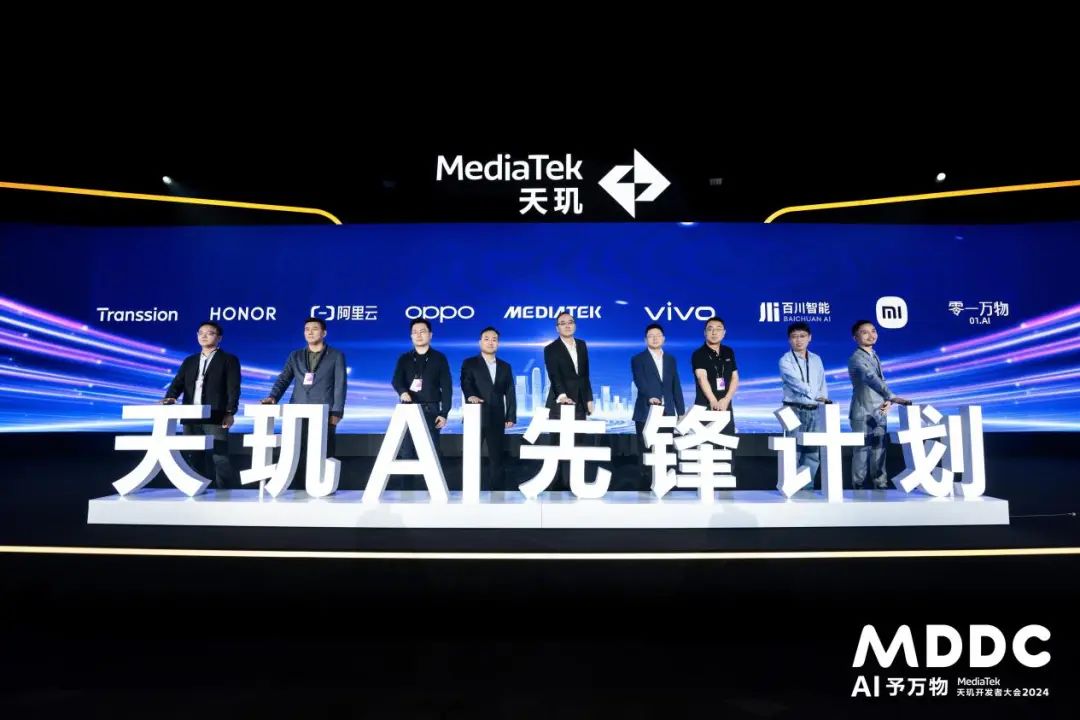
Chen Yiqiang, Deputy General Manager of MediaTek's Wireless Communication Business Unit, introduced, "The 'Star Speed Engine' can establish a bridge for communication between games and platforms. In actual games, it not only allows devices to freely adjust their computing power according to their needs and respond as needed, but also enables devices to achieve precise system monitoring and control at will. It can also accurately predict the network and execute intelligent network selection strategies."
In addition, MediaTek actively collaborates with industry partners such as Arm, Google, Kronos, and the Unreal Engine team to explore cutting-edge technologies and continuously empower the rapidly expanding Dimensity gaming ecosystem.
MediaTek stated that since the birth of the "Tianji" brand, the company has continuously built a thriving Tianji mobile ecosystem through strong investment in technology and open cooperation. Now, advanced generative AI is changing the mobile industry. MediaTek firmly believes that technology can improve human life and is committed to driving industry integration, co creation, and win-win through technological innovation. We will work with more ecological partners to build a new era based on generative AI applications.
Whenever it comes to MediaTek, in addition to discussing their strength in SoC, AP, baseband, Bluetooth, WiFi, and a series of chips, two aspects that must be mentioned are the "generation champion" theory proposed by the company's chairman, Mr. Cai Mingjie, and the "turnkey" delivery method pioneered by the company.
It is not an exaggeration to say that as long as MediaTek enters an industry, it can win the applause with its leading technology and unique "tactics". Among them, close cooperation with upstream and downstream ecological enterprises in the industrial chain is the key to the company's repeated victories. However, as Zhang Li said, we can prepare the soil, environment, sunlight, and water, scatter the seeds, and ensure that one day a big tree can grow.
By providing a good hardware platform and developer tools, MediaTek hopes to enable large models to smoothly land on its platform and "soil", unleashing the power of terminals and enabling mobile phone manufacturers to find innovative user experiences. "At the arrival of generative AI, whether developers, chip manufacturers, or mobile phone manufacturers, they are all facing a larger market, which should be the greatest common divisor among the three parties." Zhang Li said.


